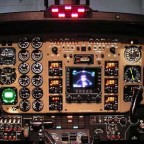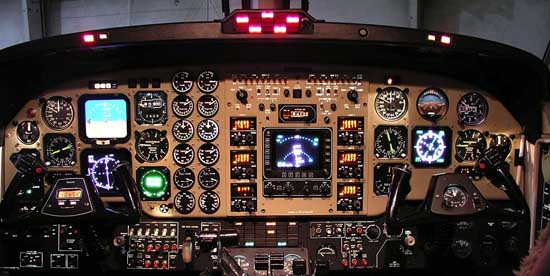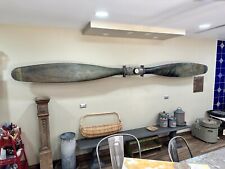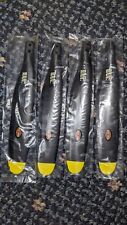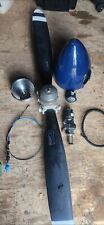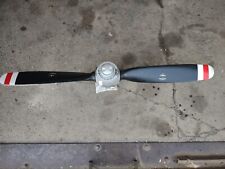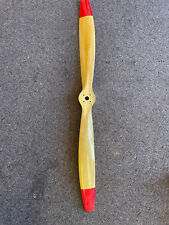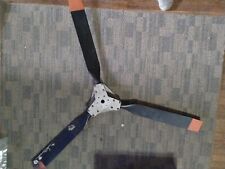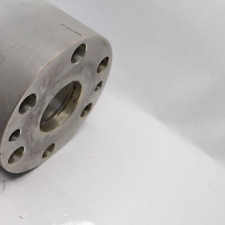Time for a “war story”!
Though most of the time the Pratt & Whitney PT6A-42 is extremely reliable there are occasions when things don’t go right. Several months ago I was getting ready for a dead leg (no patient) near midnight from BNA (Nashville, TN) to our home base CLT (Charlotte, NC) when I got a no-light start. Above 12% I put the fuel to the engine and nothing happened: no ITT, no oil pressure, no “whoosh”, but there was fuel-flow. The engine clearing checklist in this case states to motor the starter in the starter only position (full down — with no igniters) for 15 seconds to purge the fuel from the combustion chamber. I asked the copilot if he could see any fuel spilling out and indeed fuel was being vented overboard onto the ramp.
Turning off the battery I put the mechanical wheels in motion and a couple hours later another company King Air was winging it’s way west with a mechanic and parts aboard to fix our problem. Since the combustion section of the engine has two igniters it was unlikely that both had failed (one is plenty to “light the candle”) so the suspect part was the exciter box that actually sends current to the igniters (as the mechanic described it to this dumb pilot anyway!). After replacing the exciter box I tested the igniters by simply turning the battery on and moving the auto-ignition to the ARM position which fires them with an audible clicking. Problem solved, cowling back on and we are ready to go home. Going through the start procedure once again we get the engine spooled up above 12%, add the fuel and HOLY MOTHER OF… FIRE… FIRE… EVERYWHERE FIRE! I looked toward the copilot and all I could see was him haloed in a terrifying orange glow as fire shot 12 feet back from the exhaust stacks right next to his window! Quickly killing the fuel and once again motoring the engine the mechanic came back grinning and with a chuckle told me he forgot to mention that the engine was likely to “torch” once it lit off due to residual fuel being in the engine after the no-light start attempt. No harm — no foul, but it sure was impressive!
The sound sampling in the Aeroworx B200 is spot on. Altitude chimes, prop and turbine sounds, ambient noise, gear motors and flap sounds are all dead on. One sound that sent chills down my spine even though I knew I was only flying a simulation was the “TRAFFIC TRAFFIC” call that unexpectedly was broadcast by the modeled Honeywell CAS 66A TCAS system when I approached too close to a Cessna Caravan in the Charlotte Class-B airspace. I don’t care if it is simulated or real-life, that baritone “TRAFFIC” voice pops my head up every time! Aeroworx has also included the option of having a copilot voice call out items such as “gear up/down”, “flaps up/down”, etc.
With my engines up and running there is a bit of “housekeeping” to do prior to blasting off into the wild blue yonder. Inverters need to be checked and selected, avionics should be turned on, tuned and set prior to taxi, pressurization, auto-feather, trims, flaps, ATIS, clearance, etc. 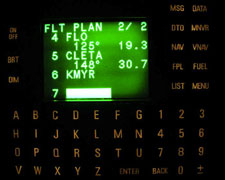 The nice thing about the Aeroworx B200 is that it really does immerse you into a realistic cockpit where you very closely approximate a real pilot with very real procedures, tasks and workloads. Flying most airplanes is quite simple, managing the entirety of the flight efficiently and SAFELY are the more time consuming aspects.
The nice thing about the Aeroworx B200 is that it really does immerse you into a realistic cockpit where you very closely approximate a real pilot with very real procedures, tasks and workloads. Flying most airplanes is quite simple, managing the entirety of the flight efficiently and SAFELY are the more time consuming aspects.
For comparative purposes I loaded up a simple flight plan from Charlotte, NC (KCLT) to Myrtle Beach, SC (KMYR). As with all models of aircraft there are subtle differences with regards to types of avionics and panel layouts since these are infinitely customizable. The Aeroworx B200 very closely resembles our late model B200 but there are some very slight differences in the EFIS system (so small that even hard-core sim pilots might not even recognize them). For instance, our B200 uses an integrated Universal UNS-1M FMS for primary navigation (at right).
I enter the route data and both the Aeroworx B200 and the real aircraft show a very similar EFIS display.
 |
 |
 The EFIS, autopilot, and flight director control panel is located on the center pedestal. Here you can select such things as whether to display a normal HSI, semi-ARC, or MAP mode on the EHSI as well as change the data fields that are displayed on both the EHSI and EADI (ETA, ground-speed, timer, decision-height, etc…) The selector for the map range is circled as well as the GPS / NAV toggle button since I wanted to select GPS navigation for my trip to MYR. The OBS course knob and heading knobs straddle the range/mode selector and the autopilot mode selectors and annunciators are in the next row down.
The EFIS, autopilot, and flight director control panel is located on the center pedestal. Here you can select such things as whether to display a normal HSI, semi-ARC, or MAP mode on the EHSI as well as change the data fields that are displayed on both the EHSI and EADI (ETA, ground-speed, timer, decision-height, etc…) The selector for the map range is circled as well as the GPS / NAV toggle button since I wanted to select GPS navigation for my trip to MYR. The OBS course knob and heading knobs straddle the range/mode selector and the autopilot mode selectors and annunciators are in the next row down.
Though most real pilots enjoy hand flying I have to admit to being spoiled by the features that modern autopilots offer. After takeoff and the initial departure the autopilot pretty much stays on for most of the flight (except in icing!) until arrival into the terminal area on the other end of the flight. Therefore this whole panel (at right) is one of the most often used during the entire flight.
Once again I’d like to point to the Aeroworx POH (am I starting to sound like the flight instructor that I am?) which has an excellent appendix that details precisely how to use the EFIS-84 and APS-65 systems correctly and how to interpret the data they display. Even a relatively high-time King Air pilot can learn a thing or two from this excellent resource!
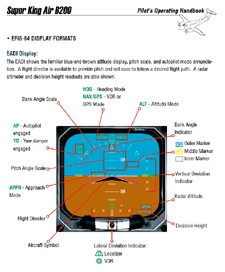 |
 |

